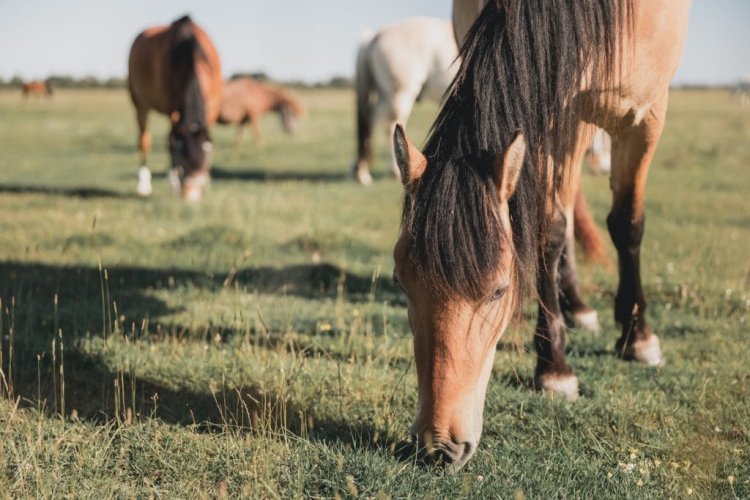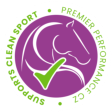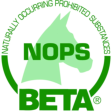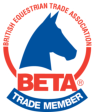in basket
TOP OFFER - SUMMER20 - 20% OFF and 4 FREE seasonal products!
Equine nutrition and laminitis

What is laminitis?
Laminitis is a systemic condition that manifests in the foot, more precisely the laminae in the hoof. These laminae are “velcro-like” sensitive structures that connect the pedal bone to the hoof wall. Laminitis is the inflammation of these laminae, which become weakened and start to breakdown. This can result in the pedal bone to separating from the hoof wall and rotating towards the sole. Laminitis can be an extremely painful and debilitating condition that has major economic and welfare implications. It has the highest death rate of any orthopaedic condition and is the second largest killer of horses in the UK after colic. It is also extremely common; in a survey involving over 100 thousand horses in the UK a prevalence of over 7% was recorded.
Symptoms of laminitis
The symptoms of laminitis can range in severity from mild lameness or shortening of stride (often described as a pottery stride) to unwillingness to walk and shifting weight from foot to foot accompanied by a strong digital pulse and slightly increased heart and respiration rate to total refusal to move, lying down a lot with heart rate over 80 bpm and respiration rate over 60 breaths/min. Changes in stance are often seen, where the horse is leaning back on to its hind feet to try and relieve the pressure on its front feet. But the extent of this depends on the amount of damage and which feet are affected, as laminitis can occur in any or all feet.
Causes of laminitis
Laminitis is best described as a syndrome rather than a single disease as there are a number of different causes. This article is focussing on the nutrition-related causes of laminitis, which are discussed under three broad categories: carbohydrate (CHO) overload, IR and Obesity. However, it is important say that whilst nutrition-related laminitis can occur as a result of one of these issues, it is more often than not that these areas are linked, and that laminitis may occur as a result of some or all of these contributing factors.
Carbohydrate overload and laminitis
Nutrition has been liked to laminitis for a long time, in fact around 350 BC Aristotle used the term ‘barley disease’ to describe the development of laminitis after the consumption of excessive amounts of cereal grain (CHO overload). With CHO overload, some non-structural CHO (NSC) are undigested in the small intestine and pass through to the large intestine where it can cause a disturbance in gut health. In the case of cereal grains, the NSC is in the form of starch and you may recall from a previous article on gut health that starch that is not digested in the foregut, but instead is fermented by the microbes in the hindgut can negatively impact on the hindgut environment. Since the 1970s, CHO overload, in particulate starch, has been one of the most researched aspects of laminitis. However, whilst ‘high-starch’ intakes from grain can cause laminitis, many studies have revealed that many cases of laminitis develop in horses and ponies grazing on pasture, which gave rise to the term pasture-associated laminitis.
Pasture-associated laminitis often occurs in seasonal, climactic and/or grazing conditions that support the accumulation of NSC, in particular fructans, in pasture. Fructans received much attention from researchers in the 1990’s when it was first suggested that these might be involved in the development of laminitis in horses. Fructans are a form of NSC, but unlike starch, horses do not produce any enzymes in the small intestine to digest fructans and instead these rapidly fermented sugars pass to the large intestine where they can disrupt the hindgut environment in the same way a large amount of undigested starch would. The fructan content of grass depends on many environmental factors, including time of day, temperature, sunlight and rainfall.
Insulin-resistance and laminitis
Relatively recently it has emerged that animals with insulin resistance (IR) are at an increased risk of developing laminitis. Insulin is secreted by the pancreas to move glucose into tissues when it is available; for example, after a meal. When a horse eats foods containing sugar or starch, glucose enters the blood, and this stimulates the pancreas to release insulin. When insulin attaches to insulin receptors, which are found on many cells in the body (muscle, fat, liver, heart), glucose is able to leave the bloodstream and enter the cell. With IR, the cells become resistant to insulin and as such the normal amount of insulin no longer works, and therefore the pancreas has to compensate by releasing more insulin to move the glucose into the cells, to prevent blood glucose levels becoming too high (hyperglycaemia). The mechanism by which IR induces laminitis is not yet fully understood and is still the subject of much research.
Obesity and laminitis
The development of laminitis has also been associated with obesity, although this is still an area that is poorly understood. It is believed that there is a complex interaction between cytokines (cell proteins involved in immune response) and the blood vessels within the hoof, resulting in inflamed laminae. Also associated with this is IR, and several studies have found associations between obesity and IR. There is a very good correlation between body condition score (BCS) and resting insulin concentrations, and it has been shown that horses with a higher BCS (greater than 7) are much more likely to be IR. The relationship between adiposity (the amount of fat coverage) and insulin function is not entirely understood, but it is proposed that adipocytes (fat cells) produce cytokines that can cause oxidative stress, which can result in laminitis. It is not clear if obesity causes IR or if IR contributes to obesity, but it is clear that horses that are obese and/or IR are at a greater risk of developing laminitis.
Nutritional managements of laminitis
If your horse has laminitis, then there should be complete removal of the feed(s) that may have been involved in the development of the laminitis and therefore have the potential to exacerbate the severity of the current episode of laminitis. If the cause is thought to be starch overload then all feed should be withheld for 24 h followed by a gradual introduction of low NSC hay. Low NSC feeds are recommended to minimise post-feeding increases in insulin, which may exacerbate the severity of the laminitis. Similar principles apply in the dietary management of pasture-associated laminitis, affected animals must be removed from pasture and housed either in a dry lot (if the laminitis is mild) or stabled with deep bedding (if the laminitis is more severe).
When selecting a forage, aim for a hay with a low NSC content (less than 10 percent). There are average NSC values available for hay as a guide, but these are only estimates and the best way to ensure you are feeding a low NSC forage is to have it analysed. Hay can be soaked to reduce the NSC content; however, soaking to reduce NSC is variable and other nutrients are lost in the soaking process. A horse experiencing laminitis will be on box rest and therefore should be provided with a forage-only diet. Soaking hay on box rest may also be beneficial to avoid colic arising, since the LI is a complex system with a number of bends, especially at the pelvic flexure and a large amount of a water is needed to ensure good digestion. Fresh grass contains over 80 % water whereas hay contains only around 10 to 15%. A horse or pony with laminitis may be suddenly taken from the field, put on to box rest and given hay as the forage source. This abrupt change coupled with a dry forage and lack of exercise may increase the risk of colic developing and therefore by soaking the hay this can reduce the risk of impaction colic. A forage balancer is advocated to provide amino acids, vitamins and minerals lacking in the hay diet, particularly if the hay is soaked.
Whilst it is important to select the appropriate type of feed it is equally important to feed the correct amount. If the horse or pony is overweight then it is advisable to feed approximately 1.5 % of current bodyweight (BW). You will also need to regularly assess BCS and keep a record of BW and BCS. If the horse or pony is not overweight then 2 % of BW should be fed. For example: 1.5% for a 300 kg pony is 4.5 kg, whereas 2% is 6 kg. The percentage of BW is on a dry matter (DM) basis and therefore if hay is fed with a DM content of 85 % then the actual weight fed would be greater, for example: if 4.5kg DM required and hay has a DM content of 85 % then 5.3kg fresh weight should be fed. This should be accurately weighed, and feeds should be spread out over the day to avoid the horse or pony having to stand with no forage for long periods, which can lead to digestive upset and behaviours such as crib-biting as horses are motivated to chew. Also, saliva is only produced as a result of chewing and periods of fasting can lead to the development of gastric ulcers given that there is no saliva to buffer the acid being produced in the stomach.
Whilst it is important to restrict intake in some animals with laminitis, it is also important to feed small amounts throughout the day to prevent long periods without access to forage. Even feeding regularly throughout the day may not be enough as some horses will eat their forage very quickly and so there are some way in which we can manage this issue:
- Use a slow feeder hay net: this has small holes and has been seen to increase the time taken to eat a set amount of hay compared to larger holed hay nets.
- Provide more than one haynet in the stable as this can increase the time it takes for horses to eat their hay provision. Therefore, it is recommended to split the set amount of hay up between three small holed haynets placed in different areas of the stable
- Another approach is to have one of the haynets hanging from a central place so that it swings when the horse eats from it can also extend eating time.
In terms of supplements, it is important to feed a broad-spectrum vitamin and mineral supplement, particularly if your horse is fed soaked hay. Supplements that are aimed at improving gut health, such as those containing yeast, can also restore and maintain a health hindgut environment. For horses with IR, studies in humans have shown type 2 diabetes to be associated with a reduction in blood plasma levels of L-arginine. There is also evidence that oral L-arginine supplementation may be an effective way of improving insulin sensitivity in obese, type 2 diabetic human patients. This warrants further investigation in horses as this may have the potential to help in the management of horses with insulin resistance and/or equine metabolic syndrome (EMS). We recommend the use of our LamiPlus supplement which contains quality ingredients and is designed to complement good nutritional management.
Reducing the risk of laminitis
Managing your horse’s weight is one of the main ways to reduce the risk of them developing laminitis and the following is a guide on ways that you can do this.
- Commit to managing your horse’s weight over the longer term.
- Base your horse’s diet on forage and/or fibre.
- Minimise high calorie feedstuffs in the diet (e.g. cereal grains and oil).
- No excessive feeding of treats (e.g. carrots, apples etc).
- Ensure adequate exercise, where appropriate.
- Be realistic about workload and feed according to the work your horse is doing.
- Avoid or restrict turnout at the times of year when sugar levels in the grass are likely to be highest (spring and autumn).
- If you do turnout, then do so at times when sugar levels are likely to be lowest (late night to early morning).
- Provide forage when your horse is not turned out.
- Restrict turnout to small, well managed paddocks.
- Do not graze on pastures that have not been well managed by grazing or cutting.
- Consider the use of grazing muzzles (ensure horse can drink enough and be aware of possible behavioural issues).
- Evaluate your horse’s diet in consultation with your veterinary surgeon or nutritionist.
Article written for Premier Performance by Professor Jo-Anne Murray.







